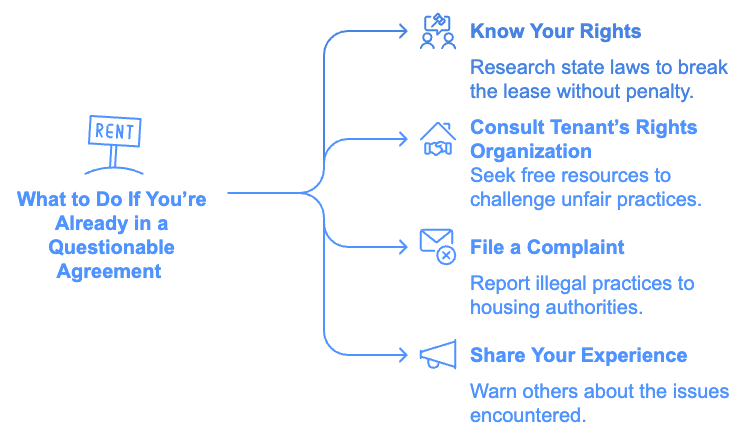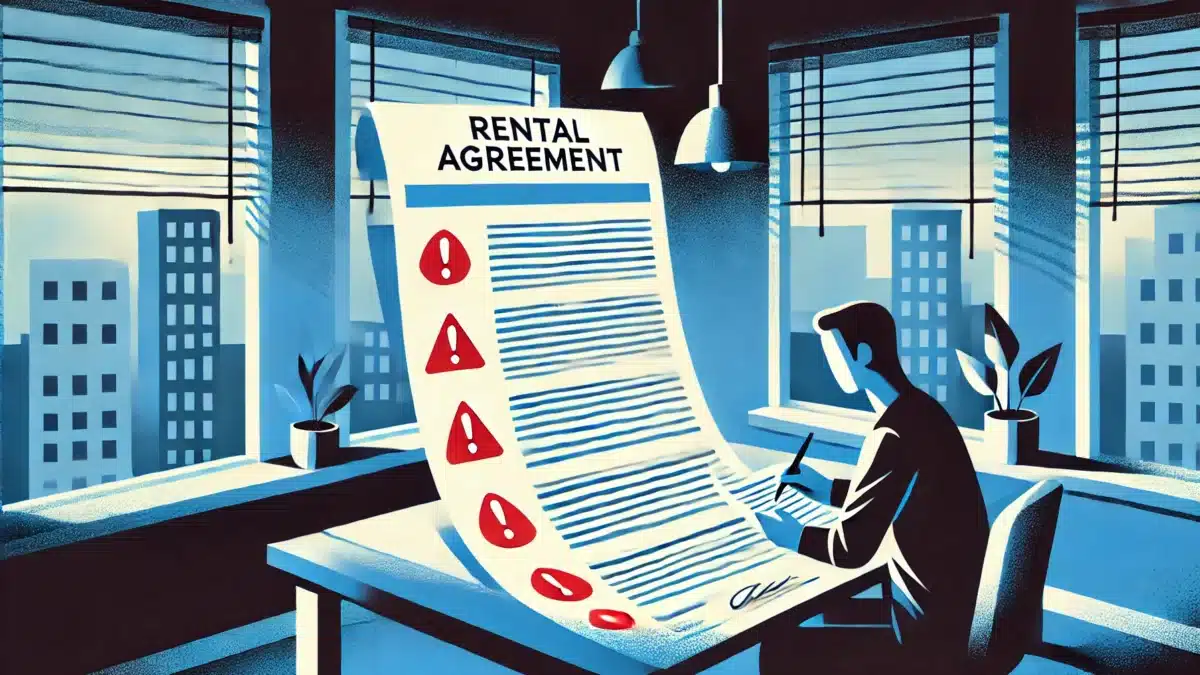
Affordable Housing Success Stories: How People Avoided Scams and Found Homes
November 11, 2020
Most Common Section 8 Scams: What We Found
February 3, 2021Rental agreements are essential for defining the rights and responsibilities of both tenants and landlords. But sometimes, hidden clauses or suspicious terms in these contracts are designed to take advantage of renters. Here at Section 8 Shield, we’ve heard from our readers about the common issues they’ve faced, and we’ve looked at different cases from across the U.S. to help you spot red flags in rental agreements. Here’s a straightforward guide to protect yourself from rental contract scams.
Why Rental Agreements Matter
A rental agreement is a binding contract that details everything from rent and security deposits to maintenance obligations and lease termination terms. Because it’s legally binding, any clauses that disadvantage you as a tenant can have lasting consequences. Identifying red flags in your rental agreement is crucial for a smooth, fair renting experience.
Red Flags to Watch For in Rental Agreements
1. Vague or Missing Maintenance Responsibilities
- What to Look For: A clear breakdown of who handles what maintenance issues, like plumbing, electrical work, or appliance repairs.
- Red Flag: If the agreement is unclear or states that all maintenance is your responsibility, you could end up paying for costly repairs.
- What You Can Do: Request specifics. Maintenance obligations should be clearly divided; ask for additions if responsibilities are left out.
2. Excessive Late Fees and Penalties
- What to Look For: Reasonable late fee amounts and clear terms regarding grace periods.
- Red Flag: Large penalties for late rent payments (e.g., anything more than 5% of your rent or fees that escalate quickly). Also, watch for “compound fees” where each day adds an additional penalty.
- What You Can Do: Negotiate excessive fees. Many states have laws on maximum late fees, so check local regulations and bring them up if the fees seem unfair.
3. Early Termination Penalties
- What to Look For: Clear options if you need to end the lease early, such as finding a new tenant or paying a reasonable fee.
- Red Flag: Extreme penalties or “no early termination” clauses that force you to pay rent for the remainder of the lease, no matter the reason.
- What You Can Do: Ask for a fair early termination option or a subletting clause. Look up tenant-friendly state rules, as some require flexibility in cases of job relocations or safety concerns.
4. Automatic Renewal Clauses
- What to Look For: Transparent renewal terms, like notice periods if you wish to move out.
- Red Flag: Clauses that renew your lease automatically unless you provide 60–90 days’ notice. This is a tactic to lock tenants in without a chance to negotiate terms.
- What You Can Do: Clarify renewal terms and ensure you can renegotiate or have the freedom to leave without financial penalty. Many renters miss these clauses and end up paying extra rent due to overlooked deadlines.
5. Unusually High Security Deposits
- What to Look For: Security deposits that comply with state laws (usually limited to 1–2 months’ rent).
- Red Flag: Demands for a high security deposit or additional fees labeled as “security” without clear explanations.
- What You Can Do: Research your state’s regulations on security deposits, and if the requested amount seems high, ask for it to be lowered. You’re legally entitled to know exactly what your deposit covers.
6. Ambiguities in Pet Policies
- What to Look For: Clear pet policies if you have a pet or plan to get one.
- Red Flag: Vague language that allows the landlord to change pet policies at any time or high “pet deposits” and fees without specifying what they cover.
- What You Can Do: If you’re a pet owner, request specific language about what’s allowed and the exact fees. Some landlords may waive fees for emotional support animals, so confirm your rights if this applies.
7. Broad Damage Clauses
- What to Look For: Specific language about damages for which you are responsible.
- Red Flag: Clauses that hold tenants responsible for “all damages,” which could include wear and tear or pre-existing issues.
- What You Can Do: Request that “wear and tear” and “pre-existing damage” be clearly excluded from tenant responsibility. Take photos and document the apartment’s condition at move-in to protect yourself.
8. Excessive Access Rights for the Landlord
- What to Look For: Clauses that outline when and how landlords can enter the property (usually for repairs, inspections, or emergencies).
- Red Flag: Agreements allowing landlords unrestricted access to your home without notice. This is an invasion of privacy and can make you feel uncomfortable in your own space.
- What You Can Do: Insist on reasonable notice periods, typically 24–48 hours, except in emergencies. Landlord access rights are regulated in many states, so mention these if you feel pressured.
9. Unfavorable Renewal or Rent Increase Terms
- What to Look For: Transparent terms on renewal and clear information on rent increases.
- Red Flag: Clauses that allow landlords to increase rent without much notice or limit your right to negotiate.
- What You Can Do: Negotiate for a cap on rent increases or a requirement for advance notice. Rent control laws vary by state, so research these to ensure fair terms.
10. Non-Refundable Fees with No Explanation
- What to Look For: Any non-refundable fees for cleaning, administrative tasks, or other services.
- Red Flag: High or unexplained non-refundable fees that aren’t associated with a real service or expense.
- What You Can Do: Ask for a breakdown of what each fee covers. Non-refundable cleaning fees, for instance, should be modest and reasonable.
Tips for Reviewing Your Rental Agreement
| Review State and Local Tenant Laws | State and local laws protect tenants from unfair rental agreement terms. Understanding your rights can give you a strong foundation for negotiations. |
| Get a Second Opinion | If a clause looks suspicious or confusing, don’t hesitate to ask a tenant rights organization or a legal professional for help. Many organizations offer free legal advice for renters. |
| Request Changes in Writing | If you spot something problematic, request an amendment in writing. Always keep a copy of your email or written request, and make sure any agreed changes are reflected in the final document. |
| Document Everything | Before moving in, document the apartment’s condition, including photos and notes. This will be invaluable if disputes arise about security deposits or damages. |
| Beware of “As-Is” Clauses | Some agreements use “as-is” language, stating the unit is rented in its current condition. This could leave you with pre-existing damage that later counts against your security deposit. Document any issues and clarify who will handle future repairs. |

Common Scams to Watch Out For in Rental Agreements
1. Rent-to-Own Scams
- Some agreements include rent-to-own clauses that sound promising but have hidden terms that make it impossible to own the property. If you’re interested in buying the property, ensure you understand each term in the rent-to-own agreement.
2. “Too Good to Be True” Deals
- Some landlords offer extremely low rent prices to entice renters into signing shady agreements. If a deal seems too good to be true, dig deeper and review each clause carefully.
3. Phantom Fees
- Fake landlords sometimes add extra fees to the contract, calling them “administrative fees” or “processing fees.” Confirm every fee’s purpose and ask questions if they’re unclear.
Final Thoughts
A rental agreement is your primary protection as a renter, but it can also be a tool that some landlords use to exploit tenants. By understanding these red flags and taking the time to thoroughly review your agreement, you can avoid many common pitfalls. Section 8 Shield is here to guide you through this process, ensuring you have a secure rental experience. Use these tips to protect yourself and help create a fairer rental market for everyone.




